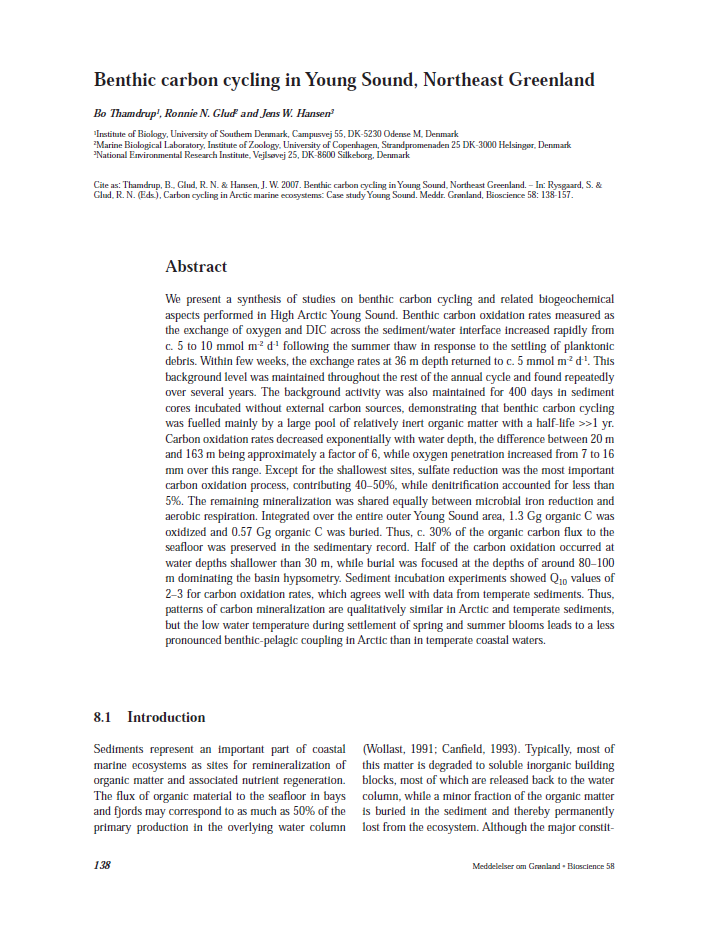Benthic carbon cycling in Young Sound, Northeast Greenland
DOI:
https://doi.org/10.7146/mogbiosci.v58.142646Abstract
We present a synthesis of studies on benthic carbon cycling and related biogeochemical aspects performed in High Arctic Young Sound. Benthic carbon oxidation rates measured as the exchange of oxygen and DIC across the sediment/water interface increased rapidly from c. 5 to 10 mmol m-2 d-1 following the summer thaw in response to the settling of planktonic debris. Within few weeks, the exchange rates at 36 m depth returned to c. 5 mmol m-2 d-1. This background level was maintained throughout the rest of the annual cycle and found repeatedly over several years. The background activity was also maintained for 400 days in sediment cores incubated without external carbon sources, demonstrating that benthic carbon cycling was fuelled mainly by a large pool of relatively inert organic matter with a half-life >>1 yr.
Carbon oxidation rates decreased exponentially with water depth, the difference between 20 m and 163 m being approximately a factor of 6, while oxygen penetration increased from 7 to 16 mm over this range. Except for the shallowest sites, sulfate reduction was the most important carbon oxidation process, contributing 40–50%, while denitrification accounted for less than 5%. The remaining mineralization was shared equally between microbial iron reduction and aerobic respiration. Integrated over the entire outer Young Sound area, 1.3 Gg organic C was oxidized and 0.57 Gg organic C was buried. Thus, c. 30% of the organic carbon flux to the seafloor was preserved in the sedimentary record. Half of the carbon oxidation occurred at water depths shallower than 30 m, while burial was focused at the depths of around 80–100 m dominating the basin hypsometry. Sediment incubation experiments showed Q10 values of 2–3 for carbon oxidation rates, which agrees well with data from temperate sediments. Thus, patterns of carbon mineralization are qualitatively similar in Arctic and temperate sediments, but the low water temperature during settlement of spring and summer blooms leads to a less pronounced benthic-pelagic coupling in Arctic than in temperate coastal waters.

Published
Issue
Section
License
Coypyright by the authors and the Commision for Scientific Research in Greenland / Danish Polar Center/Museum Tusculanum Press as indicated in the individual volumes. No parts of the publications may be reproduced in any form without the written permission by the copyright owners.

